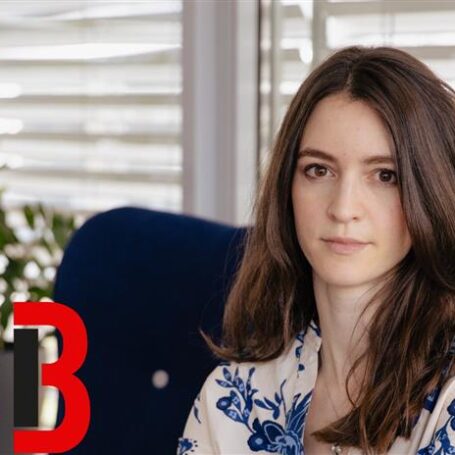The arts and cultural sector faces ‘apocalyptic’ cuts in austere Britain. But new ways of looking at economic value can help to make the case for culture
In the government’s programme of cuts it has become clear that the arts may well be hit the hardest. While historically it has been hard to pin down an ‘economic value’ on art, Dave O’Brien argues that the sector should learn from the green movement in applying an economic valuation based-approach, which may help the sector to make a better case for culture in a time of austerity.
The Coalition’s strategy to reduce the deficit is being pursued primarily through reductions in public expenditure. This has unsurprisingly elicited a range of responses, from protests on the streets, to discussions in Whitehall, as to the most appropriate cuts to divert public expenditure from public services to deficit reduction.

Credit: skip88 via the Wikimedia Commons (CC)
The prospects for the arts and cultural sector have been described in apocalyptic terms, with cuts to national and local funding for the arts coming at a time when private sector funding and individual philanthropy is dwindling. The reduction of state support has been described by Sir Nicholas Serota as a potential ‘Blizkrieg’ on the traditional mixed economy of arts and cultural funding, and requires rethinking the way arts and cultural funding is valued.
There is an alternative to the economic ‘impact measures’ that the arts and cultural sector traditionally uses. Building on recent work by the Department for Culture, Media and Sport (DCMS), the sector can begin to tell the story of the importance of arts and cultural funding in the UK through ‘economic valuation’ techniques recognised by the Treasury.
Arts and Culture and the Economic question
In order to determine how best to divide up scarce resources in a time of austerity, government needs some way of comparing and contrasting its investments. Obviously there is a strong political and ideological aspect to this process. Alongside these considerations, government also has guidance, contained in the Treasury’s Green Book, on how to appraise and evaluate central government interventions, to understand the value generated by any given public policy.
The main technique proscribed by the Green Book is a cost benefit analysis, discounted over time and taking into account all possible effects of the policy (e.g. will it ‘crowd out’ private sector investment or will it displace activity from one area to another, etc). Cost benefit analysis requires some common unit of measurement usually in the form of monetary values. This way of thinking seems obvious in many areas of public policy, although though still debated and critiqued. However, for the arts and cultural sector there is a fundamental problem in that many people within the sector and the general public believe it is inappropriate to try to talk about the importance of art and culture in the monetary terms.
Making the Cultural Case
In spite of these objections, the arts and cultural sector needs to be able to make its case for taxpayers’ money, which is certainly compelling, in ways that can be understood within the Green Book framework. The arts and cultural sector currently discusses impact as a way of narrating value, whether economic, social, or cultural. Yet these ‘impact ‘stories’ often get lost in translation when read in the context of the Green Book guidance. The new Measuring Cultural Value programme (funded by DCMS and the Arts and Humanities and Economic and Social Research Councils), recommends a straightforward solution: use economic valuation techniques to show the value of arts and culture in the UK.
The programme is keen to stress that the sector does not need to solely concentrate on the economic value of its work, but rather should be able to talk about its value in the language of economics. Microeconomics, for example, is very interested in what people value, reflected by their choices and preferences. As opposed to the current ‘impact’ language of multipliers, visitor numbers and Gross Value Added (the amount each producer contributes to the overall economy), economic valuation simply asks ‘what are people’s preferences?’ and tries to reflect this in a common currency, which is usually money (excuse the pun).
Lessons from the Green Movement
A recent report by Missions Model Money encourages the sector abandon their suspicions of economics and embrace microeconomic valuation techniques. The Green Movement has taken this approach by developing the field of environmental economics. Running alongside the development of scientific consensus on major environmental issues, environmental economics has made aspects of our natural world that we wouldn’t usually associate with price and money visible in governmental cost benefit analysis. This isn’t to say that all decisions are sensible, or that they reflect the advice of environmental science. But at least the Green Movement now has a way to talk to central government in its own language.
The arts and culture sector can tread the same path as the environmentalists but it will take a bit of a leap of faith. After being told, regular as clockwork since the early 1990s, that the arts and cultural sector needs a new way of ‘proving’ its worth, there’s a danger that a comment like ‘learn to speak economics’ will be greeted with a resigned shrug and seen as another box to be ticked, with another consultant’s fee to be paid. Another issue is that the language of economics isn’t easy: techniques like ‘willingness to pay’ surveys or ‘subjective well-being income compensations’ require expertise to carry out and interpret so they make sense. But they add another layer to the arts and cultural sector’s answer to the economic question.
Obviously this discussion has been very closely focused on central government, as local decisions are subject to a different decision-making process and don’t have the all-seeing eye of the Treasury just down Whitehall. Also, the extent to which philanthropists are interested in economic valuation is questionable. And of course, decisions are inevitably political and often ignore or play down data from cost benefit analysis. The arts and cultural sector’s mixed model of state funds, private investments and audience revenue might lead people to question whether getting too involved in economic valuation is not ‘cost-effective.’ Finally it is important to remember the arts and cultural sector is not necessarily unified in understanding or wishing to communicate economic value.
Notwithstanding these caveats, the fact remains that in a time where central government will be using cost benefit analysis to work out where the axe may fall, the arts and cultural sector may find that speaking the language of the economist will make their story much easier to tell.
The report of the end of Phase one of the AHRC, ESRC, DCMS funded Measuring Cultural value programme is available here, along with more details of DCMS’s wider Culture And Sport Evidence programme.
This post originally appeared on the LSE’s British Politics and Policy blog on 31 January.



















































































